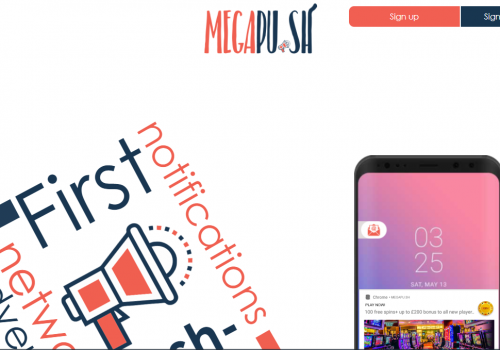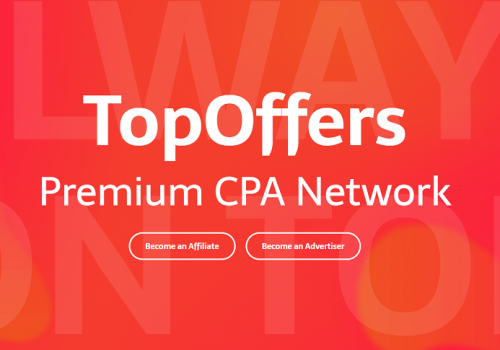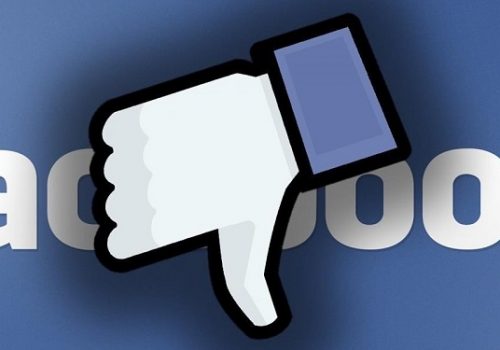ANGLES HERE ANGLES THERE …
Everybody talks about angles … you need a strong angle to make money with your ADs, this angle is not working, try another angle, use aggressive angles … but what the hell is an angle actually? Let me copy&paste a definition for you :
“An angle is the space within two lines or three or more planes diverging from a common point, or within two planes diverging from a common line…” Ok sorry, not this ANGLE, fuck geometry 🙂
We are talking about the angles used in advertising, online or offline. The angle is the way you are trying to sell something. It’s basically the story, that you tell your customers, in order to make them buy from you, or register somewhere, or apply for something … it’s all about how you approach the customer – will you use a direct approach and present your product in a straightforward way, or will you attack it “from the side” so to speak – hence the use of world angle, I think.
Christmas is coming, I’m sure Coca Cola will occupy TV with their Red Truck ads again, because Cola + Christmas = Happiness, right? That’s their angle! When I was a teenager, we all wanted those Nike Air Jordan shoes, cause that was the only way to jump as high as Michael Jordan, right? Another cool angle. Some things are priceless, but for everything else there is MasterCard! One of my favorite angles of all times 🙂
GOT IT! NOW HOW DO I COME UP WITH THE ANGLES?
It’s not hard to understand what an angle is, the problem is to come up with good angles yourself. Some of the best angles ever used were the side products of a coincidence. I heard a story once, not sure if it’s entirely true thou – there was a brainstorming session going on in some large “Hobby-Market”, I think it was Baumax or OBI or something like that. The creative team had to come up with a new way of presenting wall painting colors to their customers, the task was to build a new colour palette that would better suit the customers needs. One member of the team became frustrated with the task at some point and said something along these lines : “Screw it, they (customers) will never be satisfied with the colors we come up with, let the fuckers mix it themselves!”
This gave birth to an entire section at that market, one that attracted TON’s of new customers. Customers would walk in, use a computer to mix a color and a machine would mix it for them straight away. You can see this everywhere now. The angle was used in their fliers, print advertising and TV spots. The angle “mix your own colors and take them home in a few minutes” really killed it.
Now, how should you handle the angle creation process, that’s the important question. You need to be creative here and think about best ways to approach your customers. Try to get in their heads and think the same way they could be thinking. Be personal, tell them why THEY need this or that. Don’t just say what you are offering, give them a reason for wanting it. Actually NO. Tell them why they NEED it!
TIME FOR AN EXAMPLE!
Let me use a notoriously known smartphone application here to illustrate the process – DU Battery Saver. This one is used as an example very often as it took the internet by storm about 2 years ago. EVERYONE was promoting it. They were paying nice $ for every free install, so it produced a millionaire or two. I was promoting it too with solid results. In case you’re not familiar with the app – it cleaned the memory of an android phone and did some basic optimizations, which should have resulted in a longer battery life.
But back to the angle creation. The company behind the app gave me some banners to use, but they just flat out sucked – there was some logo and the name of the app. Obviously, it didn’t work much. I started to look around to see how other affiliates are promoting this app and found ads like this : “Boost your battery life” or “Make your battery last longer” … oh well, very creative … 🙂 These angles did convert somewhat, but they were still bad, they missed some details and something that the users could relate to.
Boost your battery life … hell yes, but how, what should I do? Make your battery last longer … how can I do it, how much longer? These are key elements that these angles are missing. So let’s recap what we are trying to sell here : free app that will extend battery life.
Let’s modify the angle a bit : Boost your battery life with this FREE app… Now it starts to sound more interesting, and almost all the info is there. Now let’s make it more irresistible : Boost your battery life by 50% with this free app! … Now we’re talking. The user still doesn’t know what to do thou, so let’s add a simple CTA : Install APP! Banner with this angle did very well, but we took it even further.
This angle was missing one element, it didn’t call out the user, there was lack of communication. We needed to grab the attention of the users somehow and tell them why they actually need this app. You can do this easily by either by asking a question or making a strong statement. I tested both approaches. “Does your battery die too fast?” and “Your batter dies too fast!” We all know that all smart-phones have a problem with battery duration, so this angle did appeal to pretty much any smart phone user in the world.
At the end, I had two strong angles that were working like a charm! “Does your battery die too fast? Make it live 50% longer with this free app.” and “Your battery dies too fast! Make it live 50 % longer with this free app.” I made many banners with these two angles, always using an “Install Now” CTA button to increase the conversions further.
These two angles worked so well because:
1. They named a problem that every smartphone user had, smartphone batteries simply sucked and everyone knew it. That’s why I got the attention of the users straight away.
2. The angle provided a simple and FREE solution to the problem. Install a free app and that’s it … it doesn’t get any easier than this.
3. There was a believable 50% increase promise. I’ve seen people using 200 or even 300%, but that’s something people don’t usually believe … but 50% … sounds doable, I’m in!
SO ONCE AGAIN, WHAT MAKES A GOOD ANGLE?
These are 3 core principles when creating good angles : Identify a problem! Offer an easy solution! Define the possible gains in a believable way!
But what if there isn’t a problem to solve and you just want to sell something?
Then you have 2 options : Create the problem OR Present the product in an irresistible way. There are dozen of ways you can approach this and the human nature will help you, focus on the darker side of it and the primal instincts.
MORE EXAMPLES FOR YOU.
Think about insurance companies and how they advertise life insurance plans. I saw an ad the other day in the TV, with a story like: “Father of 2 had a car accident, he lost work, lost house due to failed mortage payments, whole family was sad … game over. But if he had life insurance, all would have been different! They would keep the house and get fixed monthly payments from the insurance company.”
There you have it all, nicely laid out on a plate. Where there was no problem, there is one now : you drive by car to work, you can have an accident, period. You have a mortage and your family depends on your ability to keep working … one more problem. But there is a solution, an easy one … just make an insurance contract with XYZ company. The benefits are clear too … they will pay your mortage and your family won’t have to go through all that crap. Problem solved, everyone is happy.
I also remember an old TV ad for some insurance company that I saw many years ago : it was basically just a presentation of some insurance company, some cold data and how they guarantee timely payouts. They added some footage from the company HQ and mentioned how many branches they have across the country. And that was it.
This is the difference between a good and a bad angle. While the first example definitely got me thinking about an insurance plan for me and my family, the later one just bored the crap out of me. You need angles that grab peoples attention – strong message, easy to understand simple presentation, attacking the primal instincts (fear in this example).
AND ONE MORE EXAMPLE 🙂
Another fine example would be jealousy or enviousness 🙂 Let’s take the very popular “win an iphone” sweepstake offers that you see everywhere : how could we sell it using this part of human nature?
1. Problem: Your neighbor has the new iPhone 7! OR Top Celebs choose the new iPhone 7! OR Study shows, 80% of people with IQ higher than average choose the iPhone over Android phones!
- My neighbor has it? I need it too! Celebs, high IQ people? Am I worse than them? Hell NO! 🙂
2. Solution: Here is your chance to win the all new iPhone 7!
- Cool, no need to buy that expensive device, I can get it for free! But wait, they are gonna give it to me just like that? Sound fishy.
3. Make it believable : In order to enter the draw, you need to answer these 5 questions correctly. Prizes are limited, so do not wait.
- Ok, so there is only a few phones available and only the more clever ones will get the chance to win, sounds good, I’m in! 🙂
There are many ways to improve this further. Add more scarcity : contest ends in 22 hours 45 minutes. Make it more personal, it’s easy to detect what device someone surfs from : this deal is only for “detected device” users. Make it look less accessible : add more questions, harder ones, make it look like spots are limited … there are so many ways to skin a cat.
BUT I’M A HONEST GUY, I DON’T LIKE THESE ANGLES, WHAT NOW?

Ok, but what if you don’t want to mess with psychology, you don’t want to mislead your users and you simply want to sell something in a 100% honest way? No problem, it’s doable too, but prepare for a longer road to success.
A great way to utilize honesty in your angles is by writing reviews. Whatever you are good at, find products in your niche and write reviews for them. Then you can use paid ads to drive traffic to these reviews and also build organic traffic along the way. Properly written reviews can make you a lot of money and large review sites can become gold mines!
When utilizing this honesty approach, you don’t really need to mess with angles at all. The honesty itself is your angle. You just need to make people believe, that you really mean it and that you’re not some con artist. You need to gain the trust of your readers and build an audience. They need to understand who you are and why they should follow your advice.
Take this very blog for example. You just spent good 10 minutes to read this article, would you do that if you thought I’m full of shit? Definitely not! But since you’re most likely following me for a while, you know where I come from and what I’m doing. This means you already know, that there is some weight in what I have to say. And if I tell you now, that this or that tool is worth it, you will most likely accept it as a VALID opinion and consider checking the tool out. And that is because I’m 100% honest with you in everything I post on this blog.
I’m not gonna make this article any longer, I’m afaid it is too long already anyways.
Thanks for reading, in case you’ve made it this far 🙂
[grwebform url=”https://app.getresponse.com/view_webform_v2.js?u=Sym6E&webforms_id=8162402″ css=”on” center=”off” center_margin=”200″/]







6 comments
Thanks for including these familiar case studies and always providing great content! Love the smooth read (did not feel long at all) and effort you put into making it.
Great, glad to hear that! I was afraid I went a bit over the top with this article. There was still a lot to write about, but didn’t want to bore you guys to death 🙂
A great one, not too big article at all..
I could read this kind of content for hours
I love this post.
It sounds like Angle is same as Ad copy? Are they all about writing description on our Ads?
It’s not really the same, but these two are related of course.
Ad-copy is the whole text, so the wording/headline etc … The angle is the basic idea behind the ad-copy itself.
Let me use one of the examples from the article again : battery saver.
The angle could be : battery life and how to extend it – this is a problem and we want to address it. So it’s gonna be our angle.
The adcopy itself could be : Download this app and extend your battery life by 50%…
OR
Battery draining too fast? This app will fix it. Download now.
The ANGLE is the core idea so to speak, ad-copy is the final text that will present the angle.
Hi Matuloo,
thanks for sharing so much knowledge on your blog. We “e-met” on STM forum and it’s amazing to see that you share it on so many levels/channels. I just want to say thank you again 😉
Regarding angles:
They are my #1 favorite parts in marketing. You can entirely change the perception of a product without even changing the product itself. It’s a great idea to add specifics like “increase 50%” and make it believable (e.g. saying 50% instead of 500%).
Example:
Users aren’t stupid and I’m sure you can generate better quality leads for advertisers if you generate them with believable angles aka “increase 50%” instead of 500%. If users expect a 500% increase after downloading the app and they don’t get it, they’ll delete app and leave a negative review on iTunes. The advertiser won’t be so happy with that either and kick you off the offer sooner or later.
My takeaway is: Make it specific and believable.
Thanks again for sharing, Matuloo! 😉
PS: You mentioned creating questionnaires to make offers more believable (why are they giving away new iPhones?) and making the offer appear less accessible. I love questionnaires and used JotForm in my B2B business to pre-qualify my leads. Unfortunately JotForm isn’t super suitable for mobile campaigns. Do you have a tool-tip to create such questionnaires to promote adult or sweeps?